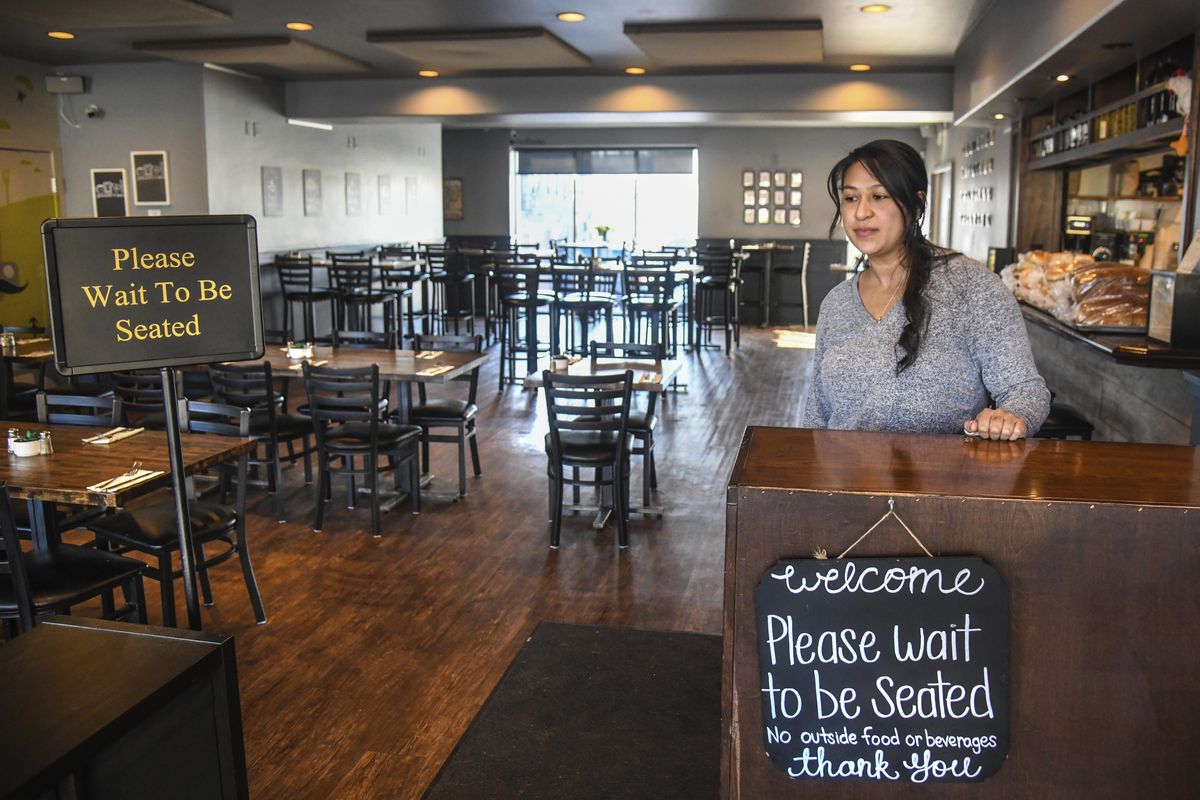Jobless claims in state hit another record; recovery expected to be uneven

The number of workers filing for unemployment benefits in Washington rose to a new record for the second week in a row as most industries felt the effects of the shutdowns and restrictions ordered to stem the COVID-19 pandemic.
The steep increase in new claims for benefits eased slightly, to about 170,000 new application requests for the week ending April 4. Nearly 182,000 new claims were filed the previous week.
But that’s probably not a sign that the worst is over, Employment Security Commissioner Suzi LeVine said. The state expects a “tsunami” of additional claims later this month, when special guidelines for the pandemic allow more people to seek unemployment and temporarily add $600 to the benefits.
“We don’t believe the economy is waking back up,” LeVine said.
Economists cautioned the economy could come back in stages, rather than all at once.
“It’s not going to be everybody back to work one day. It’s likely to be more of a ramp,” said Grant Forsyth, economist for Spokane-based Avista Corp. “It likely depends on the business and how much public contact you have.”
Different parts of the economy will recover in different ways, said Patrick Jones, executive director for the Institute for Public Policy and Economic Analysis at Eastern Washington University.
“It depends on where (in the state) you work and what sector you work in,” Jones said. “Unfortunately, people who come back to work last are probably those who can least afford it.”
In data released by the state Thursday, the greatest number of new unemployment benefit applications last week came from workers in the construction industry, with 24,394 new claims.
Other hard-hit sectors included the following:
- Retail, with 20,508 new claims.
- Health care and social assistance, with 19,462 new claims.
- Accommodations and food services, with 18,017 new claims.
- Manufacturing, with 12,973 new claims.
All were down somewhat from the number of new claims filed the previous week. But the total number seeking unemployment benefits rose to about 450,000 people, more than any time during the 2008-10 recession.
Spokane County residents filed 11,347 unemployment claims last week, a decrease from a record-breaking 12,202 claims filed a week prior, according to the Employment Security Department.
Since the week ending March 16, when Washington saw its first significant job losses connected to the epidemic, the state has paid out nearly $150 million in unemployment benefits, LeVine said.
Doug Tweedy, regional economist for the Employment Security Department, said the unemployment patterns for the Spokane area are about a week behind the statewide numbers in some industries, and parts of northeastern Washington are a week behind Spokane. But it’s “basically the same industries struggling.”
LeVine said that while there’s no way to predict how different sectors of the economy will recover, it’s unlikely that the first sectors to experience heavy layoffs will always be the first to rebound.
Construction might come back relatively quickly, for example, if there are “shovel ready” projects, she said. Hospital and education jobs might also rebound faster than other sectors in a “stair-stepped” recovery.
Health care may be one of the quickest to come back in the Spokane area, where it is also the largest sector for jobs, Jones said. Some newly unemployed people in that sector work in areas that involve elective procedures, which have been put on hold to save on personal protective equipment for medical personnel fighting COVID-19 cases and free up hospital space for the pandemic.
But it’s possible the state has managed the crisis better than initially expected, Jones said, and those doctors and their staffs might be able to come back to work sooner, which would be important for hospitals that rely on elective procedures for a portion of their revenue.
Businesses that do come back may have to take extra precautions, Forsyth said.
Manufacturers will have to adjust to more than keeping a 6-foot distance between workers on a production line. They may also have change how employees get fed in a cafeteria or change rules for common spaces.
Restaurants and bars may have to develop new standards for greater space between customers, Forsyth added.
Better testing – faster, cheaper and easier to administer – might also be a precondition for more people having the confidence to return to work, he said.
The economy might not completely recover until effective treatments for COVID-19 are developed and a vaccine is available to protect people against the easily spread virus, Jones said.
There’s no comparable previous economic event to use as a model for predicting a recovery from the pandemic, when the downturn happened so quickly, or for the structural changes some industries are likely to experience, Tweedy said.
“It’s really not an event that we’ve had before,” he said. “As we get farther into it, we’re going to learn more.”
Staff writer Amy Edelen contributed to this report.